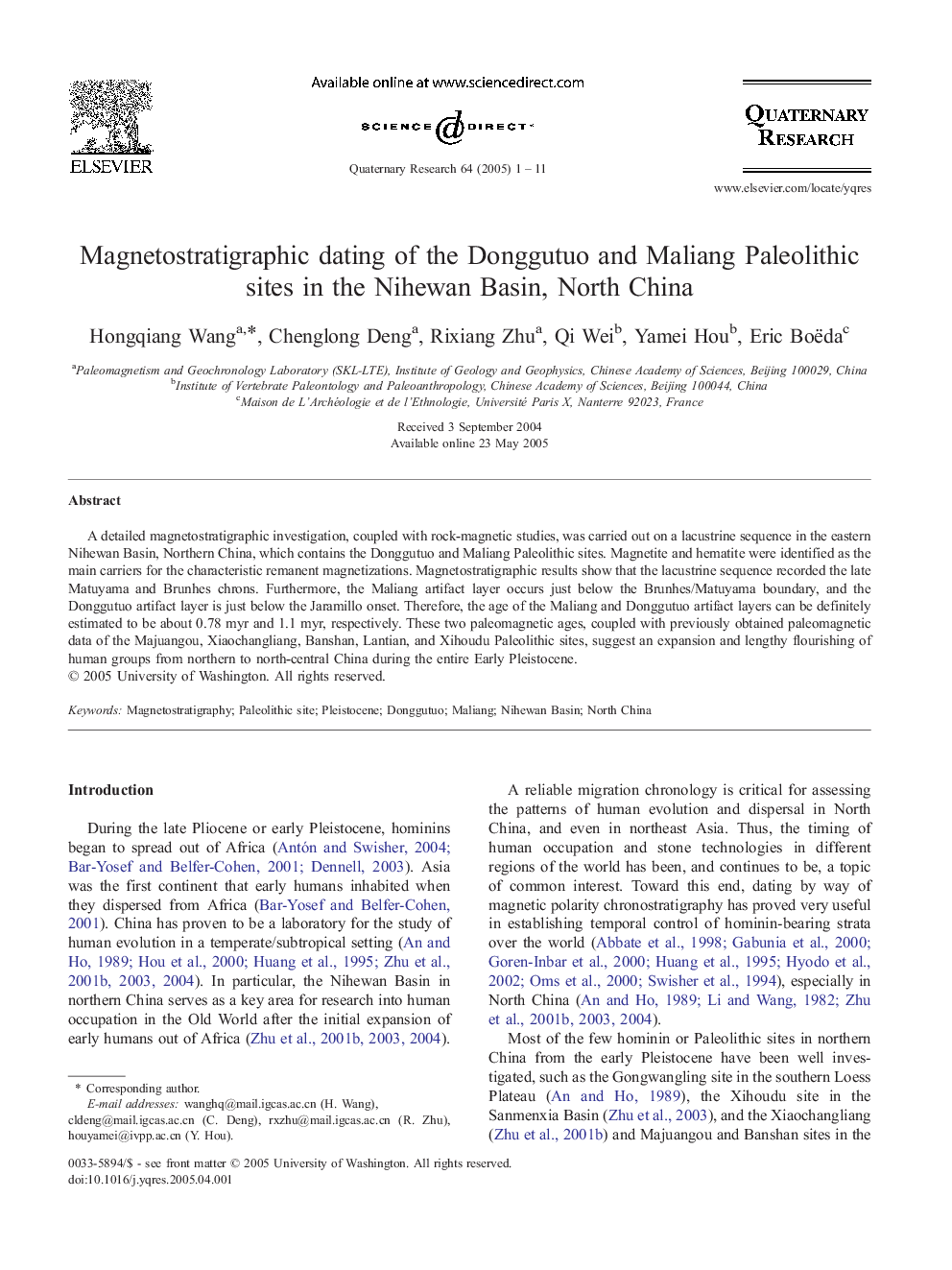| Article ID | Journal | Published Year | Pages | File Type |
|---|---|---|---|---|
| 10501310 | Quaternary Research | 2005 | 11 Pages |
Abstract
A detailed magnetostratigraphic investigation, coupled with rock-magnetic studies, was carried out on a lacustrine sequence in the eastern Nihewan Basin, Northern China, which contains the Donggutuo and Maliang Paleolithic sites. Magnetite and hematite were identified as the main carriers for the characteristic remanent magnetizations. Magnetostratigraphic results show that the lacustrine sequence recorded the late Matuyama and Brunhes chrons. Furthermore, the Maliang artifact layer occurs just below the Brunhes/Matuyama boundary, and the Donggutuo artifact layer is just below the Jaramillo onset. Therefore, the age of the Maliang and Donggutuo artifact layers can be definitely estimated to be about 0.78 myr and 1.1 myr, respectively. These two paleomagnetic ages, coupled with previously obtained paleomagnetic data of the Majuangou, Xiaochangliang, Banshan, Lantian, and Xihoudu Paleolithic sites, suggest an expansion and lengthy flourishing of human groups from northern to north-central China during the entire Early Pleistocene.
Related Topics
Physical Sciences and Engineering
Earth and Planetary Sciences
Geology
Authors
Hongqiang Wang, Chenglong Deng, Rixiang Zhu, Qi Wei, Yamei Hou, Eric Boëda,
